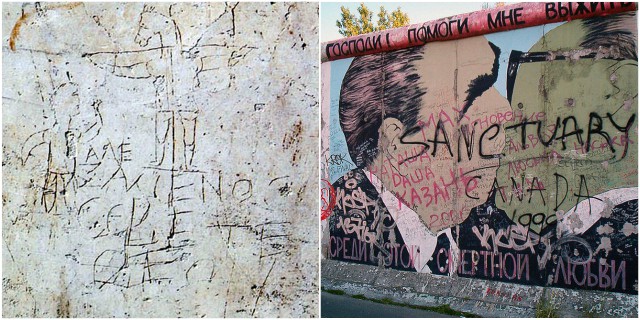The word graffiti comes from the Italian language and it is the plural of the word “graffito.” They are both derived from the word graffio, which means “a scratch.”
The earliest graffiti was created prior to written language and the first drawings on walls appeared in caves thousands of years ago. “Cueva de las Manos” (The Cave of Hands), located in Santa Cruz, Argentina, offers one of the first fascinating ancient graffiti. The painting dates from 13,000 to 9,000 BCE.
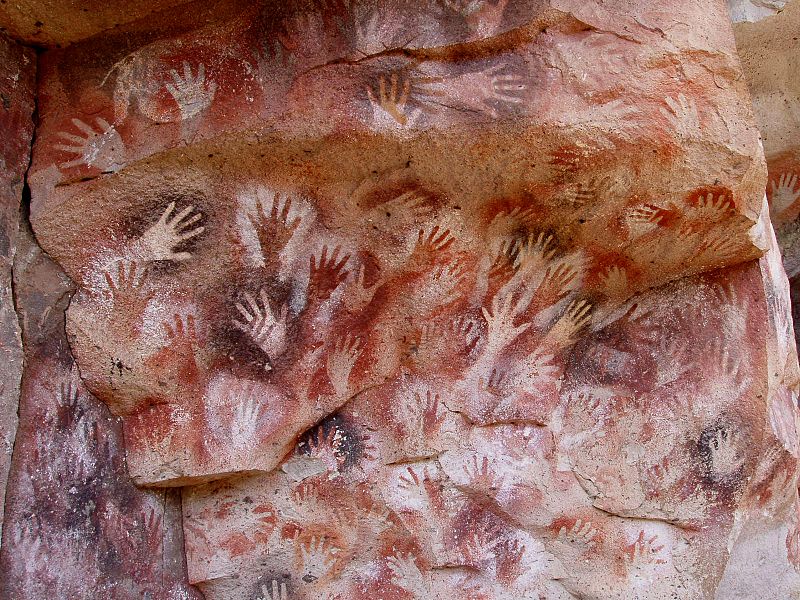
In the ancient Greek city of Ephesus (located in modern day Turkey) the first known example of “modern style” graffiti can be found. It includes the drawing of a foot, a hand, a heart, and a number and local guides say it is an advertisement for prostitution.
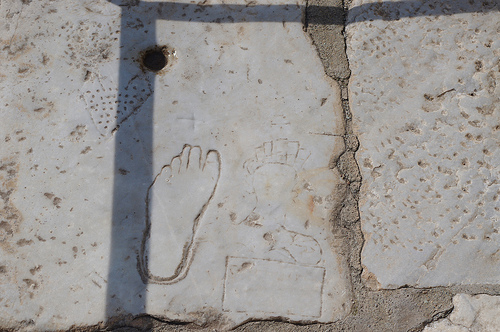
The ancient Romans also carved graffiti on walls and monuments. The Alexamenos graffito on the wall of a room located near Rome, Italy, was created around 200 AD and is the earliest known image of Jesus Christ.

Jesus is represented here with the body of a man and the head of a Donkey and the purpose of the graffiti was to insult and mock Christians.
Another early form of graffiti was found in the Hagia Sophia. A Viking mercenary is the author of the graffiti and it contains a sentence meaning “Halvdan was here”.
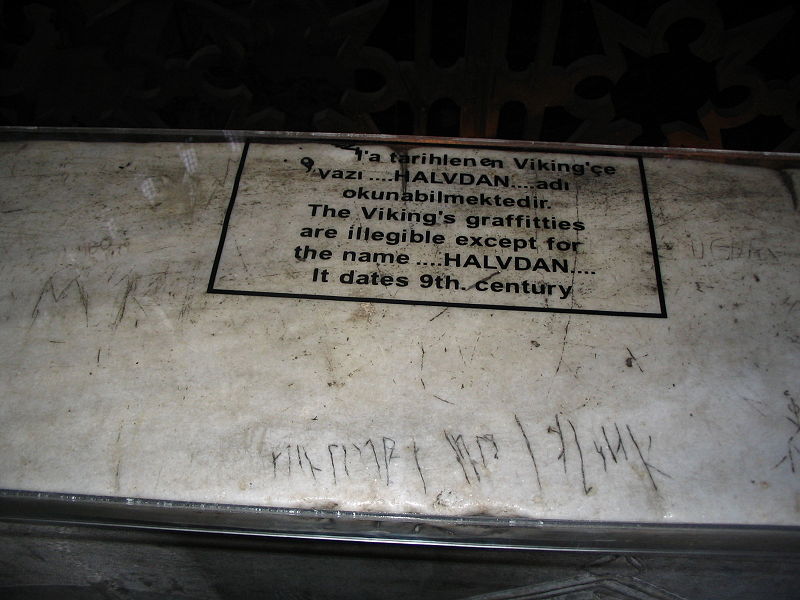
However, the style of urban graffiti that most people have seen and know about, the kind that uses spray cans it seems to have appeared in Philadelphia in the early 1960s, and by the late 1960s it had reached New York and was born on the subway trains.
During the early 70s the writer TAKI 183 (“Taki” was short for his Greek name, Demetraki, and 183 was the street he lived on) took it to another level by covering much of New York City with his tag. He lived on the 183rd street in Washington Heights and he worked as a messenger who traveled all throughout the city.

Wherever he went he would write his name at subway stations using a marker and eventually he became known all throughout the city. The New York Times even published an article in 1971 about TAKI 183. Soon after this the amount of graffiti on trains exploded.
Later, using spray cans of paint quickly became popular mostly used for tagging on the outside of trains.
But it wasn’t just tagging and writers would try to make their tags more stylish than anyone else’s by adding more colors and creating unique tags.
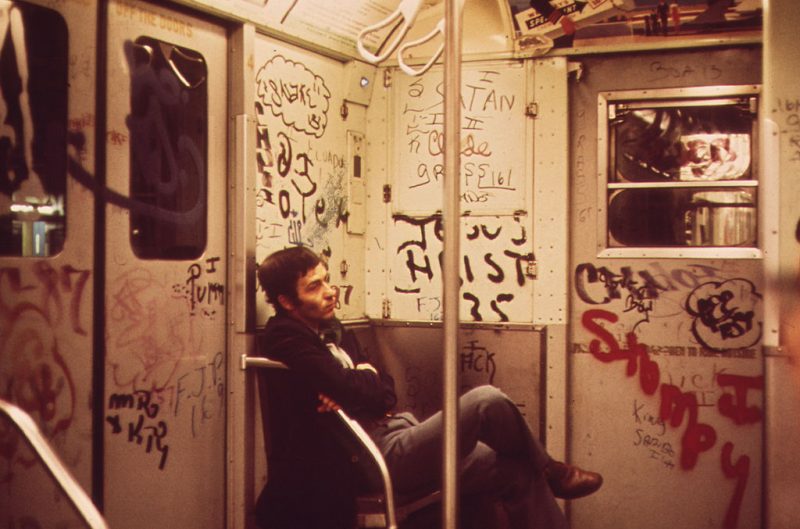
. This is how the art and science of graffiti began. In the mid-1970s, the trains were completely covered in spray paintings known as “masterpieces.”
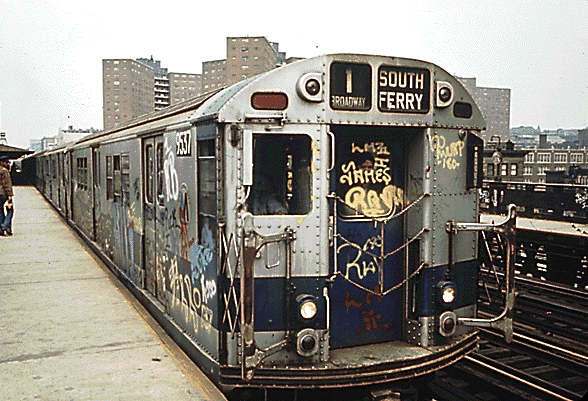
Soon art galleries in New York began buying graffiti but it was around that time when John Lindsey, the mayor of New York at that time, declared the first war on graffiti in 1972. A few die-hard artists refused to be beaten and kept the art form alive during this period.
By the 1980s it became much harder to write on subway trains without being caught and more graffiti artists went into the streets and used roofs of buildings or canvases.
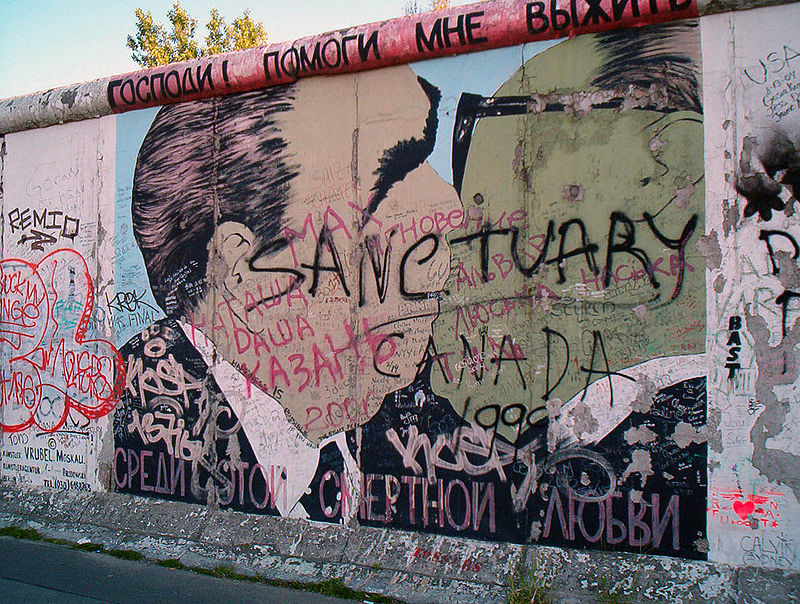
Graffiti style is constantly evolving and street artists like Jean-Michel Basquiat and Keith Haring transformed their work into mainstream art gallery fare.
Basquiat began spraying on the street in the 1970s and he became a respected artist in the 1980’s.
In the early 1980s, a new stencil graffiti genre emerged. Blek le Rat created some of the first examples in 1981 in Paris. A few years later stencils had appeared in other cities including New York City, Sydney, and Melbourne.
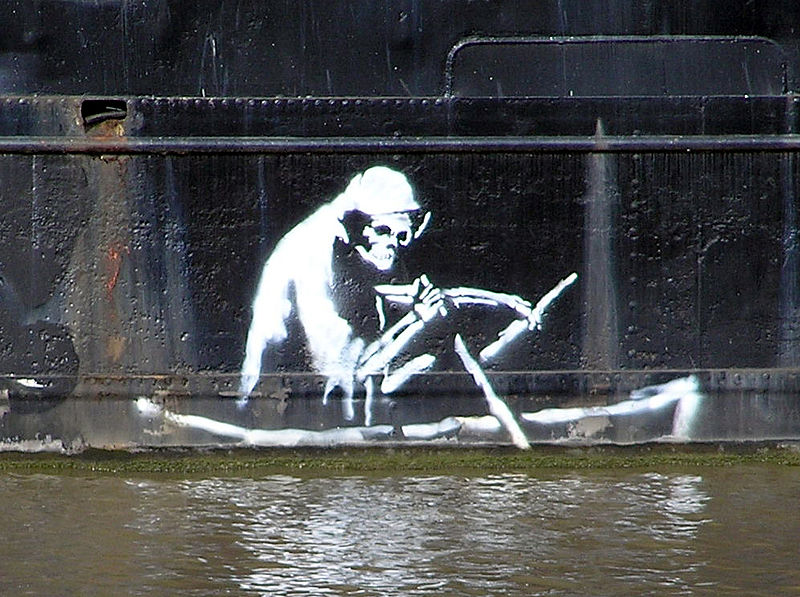
Graffiti is considered one of the four elements of hip-hop (along with emceeing, DJing, and B-Boying). Graffiti is a central part of this subculture. The origins of all of these can be traced to the Bronx, in New York City.
Here is another interesting article from us: Crusader-era hand grenade found in Israel
The emergence of hip-hop in mainstream culture during the 80s exposed graffiti to the world and it began showing up everywhere.
